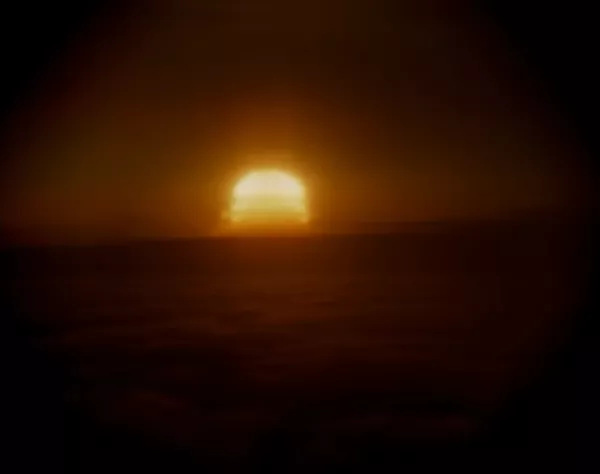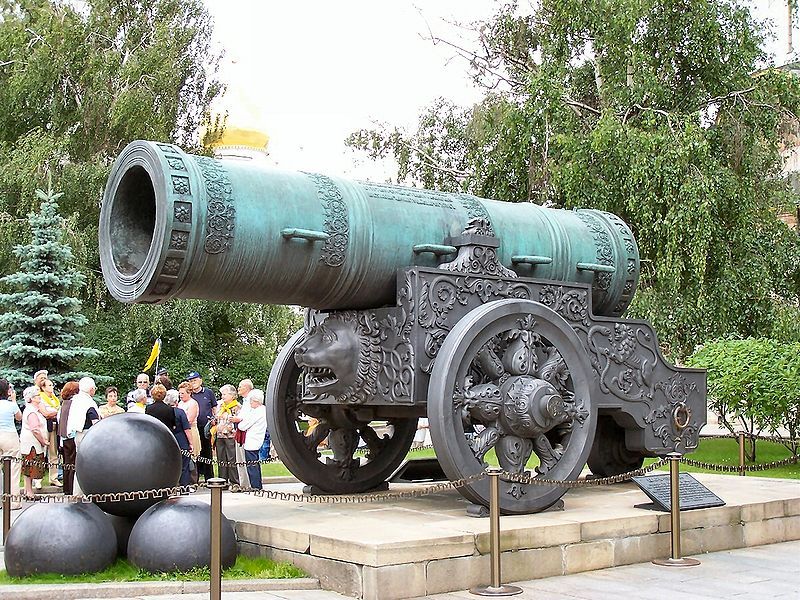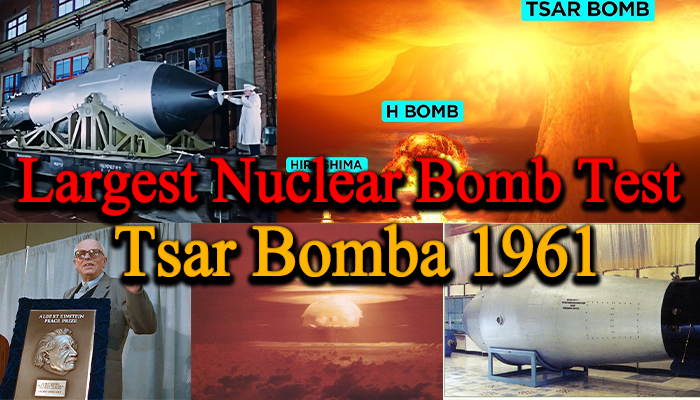If you are looking for the largest nuclear bomb test. You are in the right place. This railroad cart holds a cargo that changed the world forever – the most destructive weapon that humans have ever built. If it blew up in San Francisco, it would have shattered the glass on the building of Las Vegas!

And of course, no more homeless people in San Francisco. Or if detonated in Toronto, aside from solving the housing crisis there, all the people in Buffalo, NY would have got a third-degree burn.
The Soviet Union was planning to build and test a nuclear bomb that was 3000 times more powerful than the nuclear bombs dropped on Hiroshima and Nagasaki at the end of WWII. but thankfully, they didn’t. Tsar Bomba was only half as powerful, and yet, it was still the most powerful nuclear bomb ever detonated, with a yield of 50 megatons.


That’s the combined energy of all the conventional explosives used during the 6 years of World War II. times 10. But why the Soviets built such a massive bomb to begin with, and how it became one of the cleanest nuclear bombs ever detonated, why the inventor of the largest nuclear bomb received a peace prize from the inventor of dynamite, how manufacturing the bomb allegedly caused a shortage of women’s stocking in the Soviet Union, and why the yield of the bomb was cut in half in a last minute decision, is Not What You Think!
There are a variety of myths that exist around Tsar Bomba, the biggest of which is how it was developed in only 112 days. See, the United States of the 1950s was well ahead of the Soviet Union in the nuclear race. So in 1956, the Kremlin ordered the development of a large nuclear bomb, which at first was supposed to yield 38 megatons, then 50 and eventually 100 megatons.


But in 1958, Nikita Khrushchev put a stop to the development of this enormous nuclear bomb. Not only was a 100-megaton nuclear bomb an outrageous idea, but the Kremlin was hoping to improve their relationship with the United States. This is why the Soviets declared a unilateral moratorium in 1958, suspending the testing of their nuclear weapons.
This was followed by Khrushchev’s visit to the United States in September of 1959, marking the first state visit of a Soviet or Russian leader to the US. But that all changed when in 1960, the American U-2 plane was spotted and shot down while spying over the Soviet Union. The United States’ attempt to invade Cuba in 1961 in order to overthrow Fidel Castro’s regime didn’t help the tensions either.
These events pushed Khrushchev to order the work on the superbomb to resume. So even though it’s true that it took roughly 112 days to prepare the bomb for the final stage of the testing, its design and development had begun nearly five years earlier. Detonating the most powerful nuclear bomb in the world comes with its own challenges.
For example, the delivery. Tsar Bomba was meant to be airdropped and detonated 13,000 ft above the cape SukhoyNos of Severny Island, located in the Arctic Ocean in northern Russia. But weighing at 26.5 tons meant that there was only one airplane in the Soviet fleet that could carry such a payload.
The Tu-95V
And even then, the airplane had to be modified because the bomb was 26 ft long with a diameter of almost 7 feet, and would not fit inside the aircraft.


The bomb bay door had to be removed so the bomb could be attached underneath the aircraft. This meant that the Soviet Union had a long way before they could use such a bomb as a practical weapon. Nevertheless, the Tu-95V was sufficient for the test drop. Except for, after dropping the bomb, the airplane would not have enough time to escape the nuclear blast, which meant the crew wouldn’t survive.
That issue was solved by attaching a parachute to the bomb that would slow down its descent, giving the airplane more time to get to a safer distance. Even then, the crew was estimated to only have a 50% chance of survival. In order to increase the odds, the aircraft was painted with white reflective paint to minimize heat damage from the detonation. About that parachute: It was no ordinary parachute.

It weighed 1,800 lb, covering an area of 17,000 sq ft, and was made from nylon that was used to make women’s stockings. The running joke was that the shortage of women’s stockings in the Soviet Union in the months leading up to the testing of the bomb, was due to the building of the parachute!
THE EXPLOSION
On October 30th, 1961, two airplanes took off from an airfield in Kola Peninsula. The first aircraft which was carrying the bomb consisted of a crew of 9. The second airplane was a flying laboratory, equipped with measuring devices and cameras. The Tu-95V released the bomb from an altitude of 34,000 feet. The parachute immediately deployed, slowing down its descent to 13,000 feet, and at 11:32 Moscow time, the bomb exploded over the Mityushikha Bay nuclear testing range.
By this time, the Tu-95V had already escaped to 24 miles away, but the shock wave eventually caught up with the airplane at a distance of 71 miles. The blast reportedly increased the speed of the aircraft by roughly 60 miles per hour which dropped the airplane down by about half a mile, but pilots were able to recover from it. Ground control was unaware of all this, because the ionization from the explosion had created a radio blackout that cut communications between ground control and both aircraft for about 40 minutes.
The light flash from the detonation was visible from as far as Norway and even Greenland. The shockwave from the explosion destroyed windows in a village located 485 miles away. The seismic wave went around the Earth. three times. The fireball was visible from 620 miles away, which had one bizarre side effect. Several tribes of Nenets people in Siberia believed the blinding light to be the anger of an ancient spirit and reverted back to shamanism in order to atone their sins.
But why was the yield of the bomb cut in half from its originally planned 100 megatons? According to one theory, the nuclear scientists in charge were afraid that a 100-megaton explosion would result in a self-sustaining thermonuclear reaction in the atmosphere, which would end life on Earth. Another theory was that after this nuclear test, all the ice in the Arctic Ocean would melt and flood the planet, or that Earth’s axial tilt may shift.



These, however, all turned out to be myths. That said, there were two valid reasons to reduce the size of the explosion. If the Tsar Bomba was to yield a 100-megaton explosion, it was almost certain that the crew would not be able to outrun the blast, even considering the additional time that the parachute would buy them. But the primary reason for cutting the yield of the explosion in half was that it would create unacceptable levels of radioactive pollution.
The bomb was multi-stage and modular, and that meant that adding or removing certain elements would allow the nuclear scientists to control the size of the explosion. Andrei Sakharov, the scientist in charge of the design and overseeing the project suggested that instead of the Uranium-238, they use lead tamper in the secondary bomb module, which reduced the bomb’s energy to 50 megatons.

This reduced the amount of radioactive fission products and avoided the fireball’s contact with the Earth’s surface, which eliminated radioactive contamination of the soil and the distribution of large amounts of fallout into the atmosphere. There was a strong incentive for this modification since most of the fallout from a test would have probably descended on populated Soviet territory.
Tsar Bomba arguably produced the cleanest nuclear test in history. It generated incredibly low amounts of fallout relative to the size of the explosion. 97% of the explosion power resulted in no significant radiation fallout since the explosion was caused by a thermonuclear fusion reaction. In fact, only 2 hours after the explosion the Soviets landed a helicopter in the epicenter of the test area, since the amount of radioactive contamination practically posed no danger to the people on the ground.


But why would someone like Andrei Sakharov, who was heavily involved in the development and testing of the most powerful nuclear bomb in the world, receive a Nobel Peace Prize? In case you didn’t know, Alfred Nobel, which the Nobel prizes are named after, was the inventor of dynamite. Sakharov understood and feared that the Cold War nuclear arms race between the United States and the Soviet Union would inevitably lead to mass human casualties.

His concern influenced leading Soviet officials, including Khrushchev, which eventually contributed to the signing of the 1963 “Partial Test Ban Treaty” by the United States, the Soviet Union and the United Kingdom, prohibiting the testing of nuclear weapons underwater, in the atmosphere, or in outer space. He was honored with a Nobel Peace Prize in 1975, although the Soviet regime did not allow him to leave the country to collect his award.

That’s because Sakharov was also a strong advocate for human rights in the Soviet Union and voiced his opposition to political oppression and censorship. In the end, Tsar Bomba was in the same class as Tsar Cannon, the largest cannon in the world by caliber, and Tsar Bell, the largest bell in the world. And just like how the Tsar cannon never fired a single shot, and the Tsar bell was never suspended or rung, the Tsar Bomba was also never intended to be used as a weapon.


It was a showpiece designed to demonstrate the might of the Soviet Union. But given that the Partial Test Ban Treaty is still in place to this day and signed by more than a hundred countries, it is not unreasonable to suggest that the detonation of the largest nuclear bomb in the world has had a long-lasting impact on world peace, at least so far.
I hope you guys find the answer to the largest nuclear bomb test in world. Thank you for Reading our article. Don’t forget to subscribe to our YouTube channel and click the like on our Facebook, Twitter, Instagram and Pinterest. Your support means a lot to us. All social media links are found on the very down of this page.
I hope you like our article about the largest nuclear bomb test ever.
Feel free to comment more down below your idea and don’t hesitate to share or pin our article…
You Might Like-
Ceylebrity News And Blog- WWW.CEYLEBRITYNEWS.COM
Visit Our Online Shopping Website- WWW.CEYLEBRITY.COM
Ceylebrity Sinhala News- WWW.CEYLEBRITYNEWS.LK
Share.......





I’m so happy to read this. This is the type of manual that needs to be given and not the random misinformation that’s at the other blogs. Appreciate your sharing this best doc.
Hi there, You have done an incredible job. I will definitely digg it and personally recommend to my friends. I’m sure they’ll be benefited from this site.